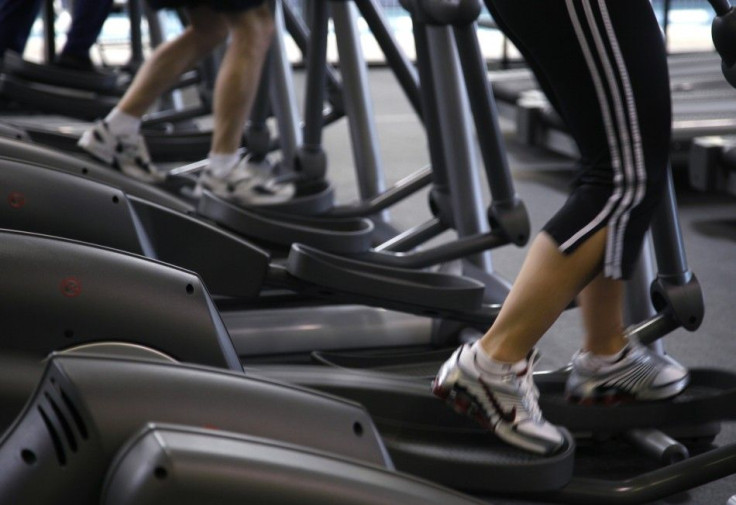Gym machines offer the attraction of distraction

Modern cardio machines come with so many bells and whistles that it's routine to watch a favorite movie, scale a virtual mountain, or share gossip with Facebook friends while getting fit at the gym.
But what do you push to maximize your workout?
Josh Lyon, of the chain of national gyms 24 Hour Fitness, advises his new clients to focus on the fundamentals.
"Learn the arithmetic before tackling the calculus," he said. "For the treadmill, it is generally incline and speed. For the elliptical, it is generally ramp and resistance."
Lyon, who is based in San Ramon, California, said more resistance or speed make muscles work harder, while with ramp and incline changes the emphasis is on specific muscles.
"Once clients grasp how these two work together, they are ready to begin experimenting with the pre-set workouts, intervals and shorter high-intensity workouts. There's a learning curve," he explained.
Education was not an issue for the beasts of burden who worked the earliest treadmills, which were built to harness the power of animals to churn butter or grind grain.
More than 50 million Americans used treadmills for fitness in 2009, according to the Sporting Goods Manufacturers Association. More than 26 million used elliptical trainers.
Slow and steady might work for grinding grain, but it does not win the cardio race, according to Lyon.
"There's something called EPOC (Excess Post-exercise Oxygen Consumption), or the afterburn," Lyons explained. "We know that shorter, higher-intensity exercises continue to burn calories for longer periods afterwards."
Alice Burron, a Wyoming-based spokesperson for the American Council on Exercise, said cardio machines, like the rest of the fitness industry, tend to reflect the trend of the moment. So pick a machine that suits you, she advises, then add others.
"The body likes change. It will adapt," she said. "In an ideal world you would have one routine for a month or six weeks, and then when your body gets strong you'd switch to something else."
But within that weekly routine, Burron said, people should incorporate lower and higher intensity workouts.
"Use the talk test," Burron said. "Are you out of breath? If you can hold a conversation but it's pretty gaspy, that's where you want to be."
The American College of Sports Medicine recommends moderate aerobic exercise for 30 minutes a day, five days a week or vigorous aerobic activity for 20 minutes on three days each week.
Boredom, Burron said, is a good sign that it's time to mix it up again.
Deborah Plitt, personal training specialist for Life Fitness, which manufactures cardio equipment, said the many features of the latest machines aim to keep things interesting.
"We're keeping our exercisers engaged by giving them variety," she said. "Cardiovascular exercise is cardiovascular exercise whether you're on a cross trainer or a treadmill."
So a touch of the console can change the scene on the screen as well as the workout and the virtual trainer control will prod people with motivating tips and instructions.
"Everything's moving in the technology world," Plitt said. "I'm in graduate school and I'm actually able to watch power point presentations while I exercise, as well as read a book or play solitaire."
© Copyright Thomson Reuters 2024. All rights reserved.





















